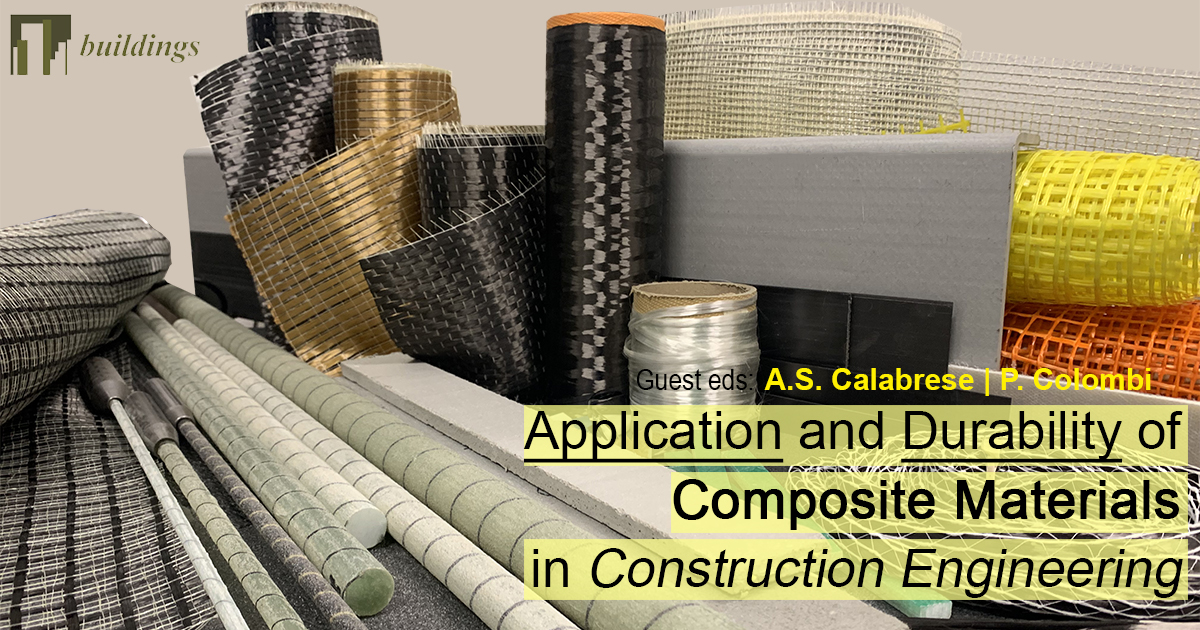Application and Durability of Composite Materials in Construction Engineering
A special issue of Buildings (ISSN 2075-5309). This special issue belongs to the section "Building Materials, and Repair & Renovation".
Deadline for manuscript submissions: 20 September 2024 | Viewed by 3885

Special Issue Editors
Interests: FRP; FRCM; CRM; TRM; strengthening; durability; fatigue; bond; fracture mechanics; existing structures
Special Issue Information
Dear Colleagues,
It is with great pleasure that we announce the new Special Issue of Buildings, entitled "Application and Durability of Composite Materials in Construction Engineering".
You are warmly invited to submit your contribution to this Special Issue on the topic of composite materials for structural applications, involving both organic (FRP) and inorganic (FRCM, TRM, SRG, CRM) matrix composites. The Special Issue welcomes original research articles, case studies and literature reviews on the use of composite materials either as a method for externally bonded strengthening for existing structures or as internal reinforcements of reinforced concrete elements. The application of these materials has become, nowadays, a common practice in construction engineering; however, some aspects inherent to the design of their applications and their long-term behaviour are still under investigation in the scientific community.
Contributions to this Special Issue can include, but are not limited to, topics related to the application of externally bonded and internal composite reinforcements that are investigated from an analytical, numerical and experimental point of view.
In particular:
- Static and fatigue behaviour;
- Bond behaviour;
- Design;
- Durability and long-term behaviour.
We look forward to receiving your submissions.
Prof. Dr. Pierluigi Colombi
Dr. Angelo Savio Calabrese
Guest Editors
Manuscript Submission Information
Manuscripts should be submitted online at www.mdpi.com by registering and logging in to this website. Once you are registered, click here to go to the submission form. Manuscripts can be submitted until the deadline. All submissions that pass pre-check are peer-reviewed. Accepted papers will be published continuously in the journal (as soon as accepted) and will be listed together on the special issue website. Research articles, review articles as well as short communications are invited. For planned papers, a title and short abstract (about 100 words) can be sent to the Editorial Office for announcement on this website.
Submitted manuscripts should not have been published previously, nor be under consideration for publication elsewhere (except conference proceedings papers). All manuscripts are thoroughly refereed through a single-blind peer-review process. A guide for authors and other relevant information for submission of manuscripts is available on the Instructions for Authors page. Buildings is an international peer-reviewed open access monthly journal published by MDPI.
Please visit the Instructions for Authors page before submitting a manuscript. The Article Processing Charge (APC) for publication in this open access journal is 2600 CHF (Swiss Francs). Submitted papers should be well formatted and use good English. Authors may use MDPI's English editing service prior to publication or during author revisions.






